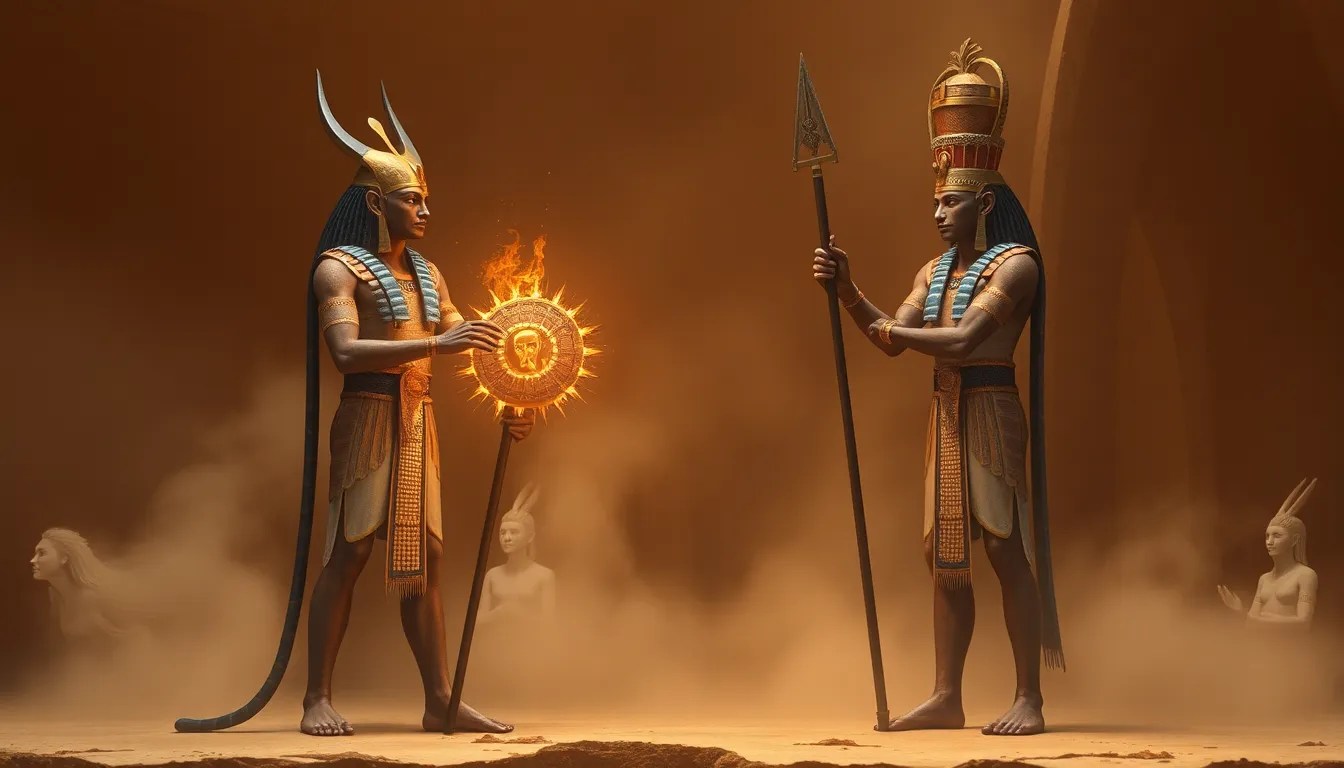The Role of Protective Deities in Egyptian Rituals and Ceremonies
I. Introduction
In ancient Egypt, protective deities held a significant place in the spiritual and daily lives of the people. These divine beings were believed to offer safety, guidance, and intervention in both earthly and spiritual matters. Their importance is underscored by the extensive rituals and ceremonies dedicated to invoking their favor and protection.
This article explores the role of protective deities in Egyptian rituals and ceremonies, examining their historical context, symbolism, influence on daily life, funerary practices, and impact on culture.
II. Historical Context of Egyptian Deities
A. Origins of protective deities in ancient Egyptian mythology
The origins of protective deities in ancient Egyptian mythology can be traced back to the early dynastic period, where gods and goddesses were closely associated with natural elements and human experiences. As civilization developed, so too did the complexity of their deities, with many embodying specific protective attributes.
B. Key protective deities: Isis, Osiris, Horus, and others
Among the pantheon of Egyptian gods, several deities are particularly notable for their protective roles:
- Isis: The goddess of magic and motherhood, Isis was revered for her protective qualities, especially towards children and the deceased.
- Osiris: As the god of the afterlife, Osiris played a crucial role in safeguarding souls during their journey in the underworld.
- Horus: The falcon-headed god symbolized kingship and protection, often depicted safeguarding the pharaohs.
- Thoth: The god of wisdom and writing, Thoth was invoked for guidance and protection in matters of knowledge and communication.
III. Symbolism of Protective Deities
A. Representation of safety, guidance, and divine intervention
Protective deities in Egyptian mythology symbolized safety, guidance, and the divine intervention of the gods in human affairs. They were seen as intermediaries between the mortal realm and the divine, providing comfort and assurance during challenging times.
B. Iconography and attributes associated with protective deities
The iconography of protective deities is rich with symbolism:
- Isis: Often depicted with a throne-shaped crown, she is shown with outstretched wings, symbolizing protection.
- Horus: Represented as a falcon or a man with a falcon head, he embodies vigilance and guardianship.
- Amulets: Many amulets featured the images of these deities, designed to invoke their protective powers.
IV. Protective Deities in Daily Life
A. Role in household rituals and personal protection
Protective deities played a vital role in the household, where rituals were performed to invoke their blessings. Families would often create small altars and offer daily prayers to seek their protection over the home and its inhabitants.
B. Amulets and talismans featuring protective deities
Amulets and talismans featuring protective deities were common in ancient Egypt. These objects were believed to provide safety and good fortune to the wearer. Some popular types included:
- Scarabs: Symbolizing rebirth and protection.
- Ankh: Representing life and immortality, often associated with Isis.
- Eye of Horus: A symbol of protection and royal power.
V. Protective Deities in Funerary Practices
A. Importance in the afterlife and mummification rituals
Protective deities were integral to funerary practices, ensuring safe passage to the afterlife. The belief in an afterlife necessitated complex rituals to prepare the deceased for their journey, with protective deities serving as guardians.
B. Specific deities invoked during burial ceremonies
During burial ceremonies, specific deities were invoked to assist the deceased. For instance:
- Anubis: The god of mummification, Anubis was called upon to protect the body and guide the soul.
- Isis: Invoked for her role in resurrection, she was believed to ensure the deceased’s safe arrival in the afterlife.
VI. Rituals and Ceremonies Invoking Protective Deities
A. Overview of key rituals involving these deities
Several key rituals involved the invocation of protective deities, encompassing both public and private ceremonies. These rituals were often elaborate and steeped in tradition, reflecting the deep-seated beliefs of the culture.
B. Case studies of significant ceremonies, such as the Opening of the Mouth
One significant ceremony was the Opening of the Mouth, a ritual performed on mummies to restore the senses and allow the deceased to speak in the afterlife. This ceremony involved:
- Invocation of protective deities like Anubis and Isis.
- Use of ritual tools to symbolically open the mouth of the deceased.
- Recitation of spells and prayers to ensure divine protection in the afterlife.
VII. The Influence of Protective Deities on Egyptian Culture
A. Impact on art, literature, and societal norms
The influence of protective deities extended beyond rituals and into the fabric of Egyptian culture. Their presence was evident in art, literature, and societal norms, with depictions of these deities serving as inspiration for countless works.
B. Enduring legacy in modern interpretations and practices
The legacy of protective deities continues to resonate in modern interpretations of Egyptian mythology. Contemporary practices, including spiritual rituals and the use of amulets, reflect the enduring belief in the protective power of these ancient gods.
VIII. Conclusion
In summary, protective deities played a crucial role in the rituals and ceremonies of ancient Egypt, providing safety, guidance, and divine intervention. Their influence shaped not only the spiritual beliefs of the people but also their daily lives and cultural expressions.
Reflecting on the lasting impact of these beliefs, we see how the reverence for protective deities continues to inspire and inform contemporary practices, showcasing the timeless nature of these ancient traditions.




